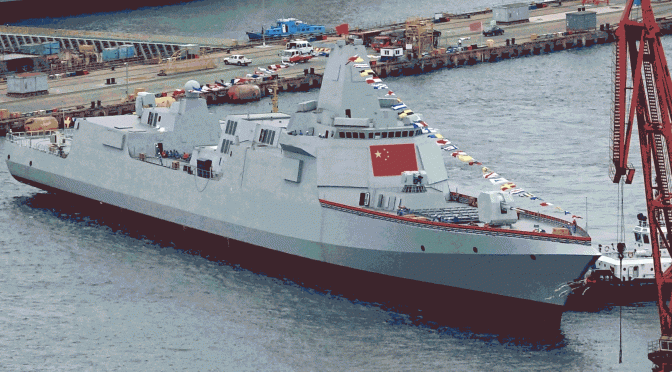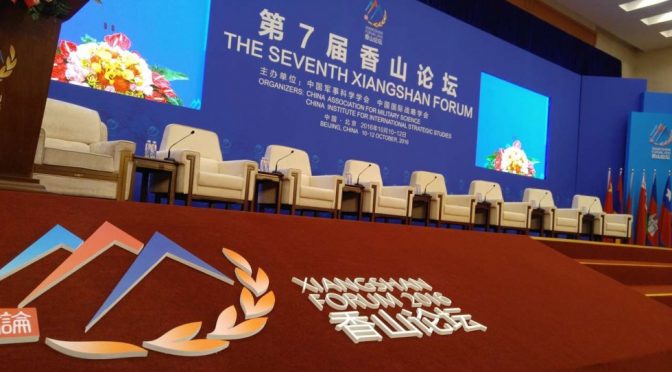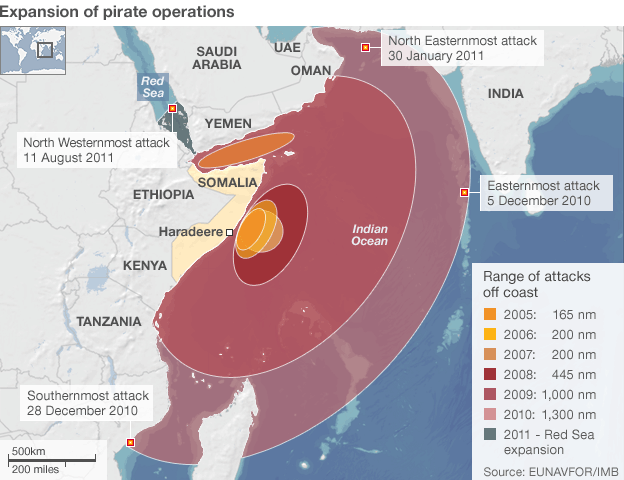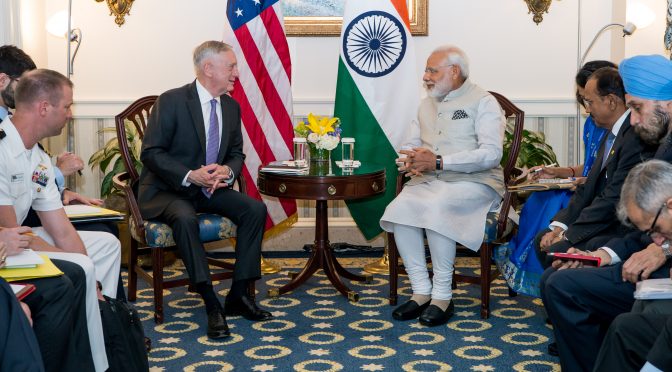By Cris Lee
CIMSEC was pleased to be joined by Dr. Toshi Yoshihara of the Center for Strategic and Budgetary Assessments (CSBA). Professor Yoshihara is a long-time expert and well-published author on Asian security topics, Chinese naval capabilities, and Chinese maritime strategy. We are interested in his thoughts on recent security trends and what kind of calculus should be taken into account when analyzing the military balance in the Western Pacific.
Cris Lee: Thank you for joining us, Dr. Yoshihara. Could you please tell us a bit more about yourself?
Toshi Yoshihara: I’m currently a senior fellow at the Center for Strategic and Budgetary Assessments and I’ve been at CSBA since 2017. I study Chinese military strategy and doctrine, Chinese maritime strategy, Asian security affairs, the overall military balance in Asia, and U.S. maritime strategy in Asia.
Before joining CSBA, I was the inaugural John A. van Beuren Chair of Asia-Pacific Studies at the Naval War College. As an endowed chair, I helped to support research on—and the teaching of—all things Asia at the war college. I was also a professor of strategy in the Strategy and Policy Department at the Naval War College, where I taught strategy for over a decade.
I’ve been looking at Chinese military and defense issues since the late 1990s, so this is an area of great interest to me. It’s a real pleasure to join you today.
Cris Lee: Thank you. Dr. Yoshihara, you’ve studied Chinese military and maritime issues from the beginning of what we could call a distinct and recent modernization period that goes on to this day. You’ve also observed in your writings that there needs to be an understanding in fundamentals, and how to understand these changes through certain analytical perspectives.
Could you introduce us to what you think we should understand when understanding the military balance in the Pacific, and when measuring up American maritime capacity in the Pacific versus that of the Chinese?
Toshi Yoshihara: I think it’s very important to take into account a variety of factors. The first variable is the bilateral naval balance between China and the United States. The Sino-U.S. naval balance, in part, involves surface ships, submarines, naval aviation units, the combat logistics fleet, and so forth on both sides. But, this does not fully capture the balance. China also possesses other elements of seapower.
China’s shore-based military power is integral to this overall balance, including: shore-based aircraft armed with long-range anti-ship cruise missiles and shore-based cruise and ballistic missile forces. Anti-ship ballistic missiles, such as the DF-21 and the longer-range DF-26, can reportedly strike large surface combatants at great distances. These land-based capabilities enable China to impose its will on its adversaries at sea by launching striking power from the Chinese mainland.
I think it’s worth thinking through the operational scenarios, particularly for U.S. naval forces, should the United States decide to intervene on behalf of its regional allies and friends, including Japan and Taiwan. It’s worth thinking through contingencies in which U.S. naval forces could come under withering firepower from sea and from ashore.
But, the military balance still represents only a partial picture. We have to consider the non-military implements of Chinese military power. The China Coast Guard—the so-called “white hulls”—constitutes a frontline force in the maritime domain. China’s maritime militia is also a critical component of its first line of defense. It’s thus important to think about the military and the non-military balance, and to think about how they mesh together in order to fully comprehend the overall balance.
When considering the military balance, we also have to think more broadly about the fundamental asymmetries between a local power and a global power. The United States is a global power that must defend its interests globally. It therefore needs a global navy that conducts a whole host of missions worldwide. In practice, only a fraction of a fraction of the U.S. Navy is ready for action in Asia. The rule of thumb is that the U.S. Navy deploys a third of its forces at any given time, owing to maintenance and workup cycles. Of that third, only a portion of those forces is in Asia at any given time while the rest of the fleet is operating elsewhere around the globe. By contrast, China, the local power, can devote the bulk of its forces in its own backyard. I think this asymmetry puts the naval balance in perspective.
However, another asymmetry—the role of allies and friends—works in favor of the United States. Washington boasts many high-quality, like-minded maritime allies around the world. Think about Japan, South Korea, Australia, and Taiwan. Extra-regional powers, including India and even Britain and France, are also turning their attention to the Western Pacific. The naval balance looks very different when considered in the context of coalitions. But, this by no means suggests that we can take our allies for granted. On the contrary, we need to continue to cultivate close operational ties with our allies to maintain our collective competitive edge.
Cris Lee: Starting with the 1990s and going to the late 2010s you studied the Chinese Navy which encompasses essentially the bulk of their present period of modernization. How far has the Chinese Navy come in terms of capacity and what they can do now, and how this has affected the military balance?
Toshi Yoshihara: What we’ve witnessed, particularly over the past 10-15 years, is an extraordinary transformation of the Chinese Navy. China already has the largest navy in Asia. This has been the case for quite a few years. Some earlier estimates predicted that the Chinese Navy will be the largest navy in the world by 2020 and that, by 2020, it will be the second-most capable expeditionary force, second only to the U.S. Navy. More recent estimates have concluded that the Chinese Navy has already surpassed the U.S. Navy in size.
By my own calculations, in 2007, China had about seven surface combatants that could be considered modern by western standards. By 2017, that number jumped to around 80. By the end of 2018, based on my calculations, China could have more than 90 modern surface combatants. This represents a remarkable shift in the naval balance. Given the inherently capital-intensive nature of navies, this massive buildup not only reflects China’s ability and willingness to pour resources into seapower, but it also reflects a long-term strategic will to the seas.
From a historical perspective, this kind of buildup happens infrequently. Its infrequency can be measured in generational terms. Comparable frenzied naval buildups took place prior to both world wars. Historically, when these buildups have occurred, they have preceded great power competitions and global wars. We thus have to pay close attention to China’s remarkable transformation .
It is not just the Chinese Navy. China’s maritime law enforcement fleet is also the largest in Asia. In fact, it is larger than all of the other Asian maritime law enforcement fleets combined. And China’s fleet is still growing.
From an operational perspective, China has modernized its navy, in part, to fight the U.S. Navy in a war at sea. The Chinese Navy’s heavy focus on anti-surface warfare and the development of a large family of long-range anti-ship missiles are powerful indicators. As Admiral Harry Harris, the former commander of Pacific Command, noted in congressional testimony, China is “outsticking” U.S. forces, meaning that Chinese anti-ship missiles far outrange those of their American counterparts. In other words, Chinese missile salvos could reach our forces well before we can get within range to hit back.
At the same time, it’s not just hardware. The Chinese Navy has been honing its skills as an expeditionary force. China has conducted uninterrupted naval operations in the Indian Ocean for a decade, making it a legitimate Indian Ocean power. It now has a base in Djibouti, allowing China to have a permanent presence in a region that was once the exclusive preserve of Western seapower. Over the past ten years, the Chinese Navy has dispatched flotillas to “break through” the first island chain—the transnational archipelago stretching from Japan to Indonesia—into the open waters of the Pacific on a regular basis. These sorties have demonstrably enhanced the tactical proficiency of Chinese naval forces.
It was not so long ago that a U.S. surface combatant could transit the entire length of the South China Sea without running into a Chinese counterpart. Today, a U.S. warship steaming through the South China Sea would just as likely be met and trailed on a continuous basis by modern Chines surface combatants, some of them superior to our warships in anti-surface warfare. This is the new normal. This is something we have to come to terms with.
Cris Lee: With regard to that evolved capacity, how do you think perspectives have changed on the Chinese Navy, particularly those of its peers and the U.S.?
Toshi Yoshihara: I think our attitudes have changed quite a bit as a result of China’s naval transformation. Let me take you back to the 1990s. In the 1990s and well into the 2000s, condescension characterized our views of the Chinese Navy. A running joke that could be heard in the hallways of Washington think tanks was that a Chinese attack on Taiwan would be akin to “a million-man swim.” This evocative image of a million-man swim reflected America’s patronizing views of the Chinese military at the time. It was widely assumed that the Chinese Navy was not even a match against the Taiwanese Navy, much less against Japan’s Maritime Self-Defense Force. Moreover, some asserted that China would struggle to become a regional navy well into the early decades of the 21st century.
Today, it is no longer controversial to describe China as a serious seapower. It is widely accepted that China is a genuine maritime power capable of challenging the United States and its interests in Asia. Indeed, by many non-military measures, China is already a leading maritime power. Its merchant fleet and fishing fleet are already among the largest, if not the largest, in the world. Its sprawling and massive port system along the mainland coast has surpassed the world’s leading ports, such as those in Singapore and elsewhere.
Yet, a kind of smugness still persists. We still come across inapt tactical comparisons between U.S. and Chinese forces, a misplaced sense of our operational virtuosity at sea, and musty assumptions about our ability to command the global commons and about our ability to stay ahead in the competition. What these assessments miss, in my view, is the dynamic character of the rivalry. China will pose a far more complex set of challenges at sea than is generally assumed. A clear-cut conflict with a discernible beginning, middle, and end—during which the United States can amass leisurely its military power for a decisive operation—is not the most likely scenario. China will likely employ a mix of military and non-military means in the twilight between peace and war. These so-called gray-zone tactics are designed precisely to constrain, or preclude altogether, our ability to employ our military capabilities and to offset our technological and operational superiority. Side-by-side comparisons of individual naval platforms and comforting narratives about how many more carriers we have compared to the Chinese are at best simplistic, if not misleading.
Cris Lee: So this kind of smugness, does it reflect an old lineage of thinking that involves assumed U.S. maritime supremacy? How does that kind of assumed supremacy continue to affect American maritime approaches for the Pacific? What problems arise because of that?
Toshi Yoshihara: We need to strike a balance between underestimating and overestimating China. Each fallacy creates its own set of analytical problems. Underestimation certifies institutional inertia and deepens our comfort with the status quo. The siren song of our accustomed supremacy at sea is really hard to resist. The logic goes like this: since we’ve been unbeatable following the Soviet Union’s collapse, our presumption is that this dominance will stretch indefinitely into the future.
The temptation to rest on our laurels is risky. It might mean that we won’t act fast enough in the face of the China challenge. It might mean that we won’t be able to resource our Navy and our sister services enough to meet the threat. Such complacency might mean that we could be surprised at the tactical and strategic levels. Indeed, the Chinese have consistently sprung surprises on us with their many technical and tactical developments.
Overestimation creates its own set of analytical dysfunctions. The storyline goes like this: “China’s going to be too strong and there’s nothing we can do about it. We might as well learn to live with a very powerful China. To do so, we need to accommodate China’s interests and ambitions now. We should cut a deal and reach a grand bargain with China before its too late such that China becomes so strong that it can dictate terms to us and our allies.” This is a kind of preemptive surrender.
These polarized views and their policy implications are not helpful. Rather, we need to think productively about China in ways that neither downplay its strengths and its ability to challenge the United States at sea nor overlook some of its structural weaknesses.
Cris Lee: Have you seen these perspectives impact the Pacific in recent times and how a rising China’s changing capabilities have impacted policy?
Toshi Yoshihara: A key danger is the growing mismatch between American commitments and resources. When our resources are inadequate to meet our commitments to defend Asia, we have a situation akin to bluff. The bigger the gap, the bigger the bluff waiting to be called by our adversaries.
A related danger is the declining confidence among our allies and friends about the credibility of our commitments. If our allies and friends begin to doubt our security commitments to the region, they may begin to make their own calculations, pursue their own independent policies, and perhaps even cut their own separate deals with China, accommodating it or bandwagoning with it. Some may embark on an independent strategic path, such as going nuclear. Many of our Asian partners and friends, including Japan, Taiwan, and South Korea, are all latent nuclear powers.
There is still an opportunity to restore balance to our commitments and resources. But time is running short.
Cris Lee: I imagine that it would be really difficult to make friends if they view our commitments as wavering in the Pacific.
Toshi Yoshihara: This commitment-resource gap has wide-ranging ramfications beyond the military competition. Our diplomacy, for example, is only as credible as the hard power that underwrites that diplomacy. A growing gap may erode our ability to persuade our Asian allies to act in the best interests of the region. This gap thus has as much to do with the larger diplomatic-political competition that is unfolding in Asia today as it does with the naval rivalry.
Cris Lee: What are the most important aspects that need to be tackled in order for the U.S. to retain its traditional maritime advantages in the Asia-Pacific? What policies and ideas could be pursued to that end?
Toshi Yoshihara: Rather than delving into the operational and tactical aspects of the competition, let me outline some of the larger prerequisites for strategic success.
First, we need to acknowledge that we face a competent, resourceful, and determined competitor. China’s rise as a seapower has already challenged our cherished beliefs and deeply-embedded assumptions about U.S. naval prowess that have persisted over the past three decades. It will—or ought to—force us to think about scenarios that we have not had to seriously ponder since the end of the Cold War. Conditions that we took for granted, such as uncontested command of the seas, are likely things of the past. Indeed, we need to think hard about a future in which a serious contest for sea control could take place in multiple theaters and across different operational domains at the same.
Second, in this far more competitive strategic environment, we need to get reacquainted with risk as an integral component of our statecraft. For too long, risk aversion characterized our calculus. We feared taking actions that might provoke China. We thought risk was, well, risky. This aversion to risk in turn fostered timidity, paralyzed decision making, and encouraged inaction. China, for its part, took calculated risks, pursued its ambitions, and changed facts on the ground in a resistance-free environment. Just look at China’s island-building campaign in the South China Sea. Xi Jinping took a calculated risk—at first not knowing what the Obama administration would do in response—and it paid off. We need to reciprocate Chinese risk-taking. Indeed, we need to do more to impose risk on China in the maritime domain and other areas of statecraft. Only when we approach risk as a normal way of doing business, just as the Chinese have treated risk, can we stay competitive.
Third, we need to think more productively about the strengths and weaknesses on each side and exploit them to our advantage. They need not be strictly material. The intangibles matter, too. To leverage our inherent strengths, we need to revisit basic principles. We need to return to—and embrace anew—our Navy’s raison detre: to fight and win wars at sea. That is the foundational purpose of our naval power. We need to tap into our enduring strategic traditions that appeal to our way of warfare at sea. That means, in part, restoring our offensive-mindedness at sea and the derring-do that has been the hallmark of our Navy. The surface fleet’s concept of distributed lethality and its implementation are important initiatives in this context.
On the flip side, we need to assess enduring Chinese weaknesses. What can we do to take advantage of those weaknesses? Are there ways that we can tap into enduring Chinese fears to shore up deterrence? In reading the Chinese literature, I have come across repeated references to a longstanding Chinese psychological fear: the fear of being closed off from the seas and of being encircled by a hostile coalition of maritime powers. It seems to me that we should do whatever we can to play up those fears. In this context, we should take a page from the Chinese themselves and adopt anti-access measures at sea that target these psychological fears.
Finally, we need to work with our allies. I think this is one of our true competitive strengths. Frontline states like Japan can impose all sorts of costs and risks on the Chinese. Japan’s Southwestern Islands, which stretch offshore from Kyushu to the northeast coast of Taiwan, could play host to formidable anti-access weaponry. A string of anti-access bubbles along those islands would make large parts of the East China Sea extremely hazardous for Chinese air and naval forces. Think about stretching this anti-access bubble down through Taiwan and down through the Philippines. We could have a very formidable defensive architecture that would give the Chinese serious indigestion in wartime. Should cross-strait deterrence fail, for example, the United States and its allies could open up a massive geographic front that entangles China in a series of peripheral fights, drawing Beijing’s attention away from the main target, Taiwan. The very possibility that a Chinese military operation could trigger such a horizontal escalation would go far to shore up deterrence. Favorable geography and well-armed allies can thus be fused to shift the terms of competition in our favor today and into the future.
Cris Lee: Before we take our final leave, could you describe your recent work and anything else you would like to share with our audience?
Toshi Yoshihara: I’m very pleased to announce that the second edition of Red Star Over the Pacific will be published in December 2018. This is a major revision of the first edition. About 70 percent of the content is new. This partly reflects just how rapidly the Chinese Navy has developed since the first edition was published.
When the book came out in 2010, many of its arguments, including the idea that China is going to become a serious seapower, were greeted with skepticism, if not hostility. The critics implied that we were overinflating the threat. But, with the benefit of hindsight, we arguably didn’t go far enough in describing the Chinese military challenge in the maritime domain. Today, the notion that China will be a permanent factor in maritime Asia is more or less conventional wisdom.
In addition to capturing the rapid development of Chinese seapower, we frame our overall argument within the larger context of Chinese grand strategy. I’m very excited about this upcoming publication and I hope it will be well-received among colleagues, friends, and other analysts in the strategic community.
Cris Lee: Dr. Yoshihara, thank you so much for your time. This has definitely been a thought-provoking discussion.
Toshi Yoshihara: Thank you.
Toshi Yoshihara is a senior fellow at the Center for Strategic and Budgetary Assessments (CSBA). Before joining CSBA, he held the John A. van Beuren Chair of Asia-Pacific Studies at the U.S. Naval War College where he taught strategy for over a decade. He was also an affiliate member of the war college’s China Maritime Studies Institute. Dr. Yoshihara has served a visiting professor at the Fletcher School of Law and Diplomacy, Tufts University; the School of Global Policy and Strategy, University of California, San Diego; and the Strategy Department of the U.S. Air War College. He is co-author of Red Star over the Pacific: China’s Rise and the Challenge to U.S. Maritime Strategy, which has been listed on the Chief of Naval Operation’s Professional Reading Program since 2012. The second edition is forthcoming in December 2018. Translations of Red Star over the Pacific have been published in China, Japan, South Korea, Taiwan, and Germany. He holds a Ph.D. from the Fletcher School of Law and Diplomacy, Tufts University, an M.A. from the School of Advanced International Studies, Johns Hopkins University, and a B.S.F.S. from the School of Foreign Service, Georgetown University.
Cris Lee is the Senior Producer of the Sea Control podcast.
Featured Image: Chinese Type 055 destroyer (Liu Debin for China Daily)





